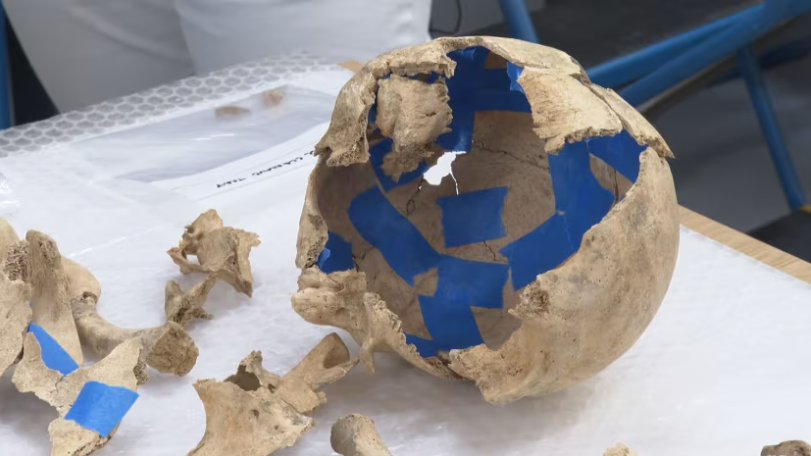
Immaculately-preserved Iron Age skeleton dating back 2,500 years uncovered in Alderney
A skeleton dating back 2,500 years has been uncovered in Alderney during an archaeological dig.
‘Bob’, as he is currently known, is thought to have died in the 5th or 6th century at approximately 19/20 years old.
Archaeologists discovered the Iron Age skeleton during an excavation on Longis Common in May.
States Archaeologist Phil de Jersey remembers the day ‘Bob’ was unearthed.
He said: “We started seeing the top of the skull coming up and it was in a slightly odd position.
“The head was slumped down on the chin, so we saw the top of the skull first.
“I remember it coming up and thinking ‘I know what that is.’”

‘Bob’ is the most immaculately-preserved prehistoric skeleton that archaeologists have found in Alderney.Credit: ITV Channel
Two skeletons were found on the same site in 2019, dating back to the first and second centuries BC.
How ‘Bob’ died is still unclear, so archaeologists are conducting further analysis of his skeleton to discover more about him.
They are also looking into his diet and whether he grew up in Alderney or came from somewhere further away.
Following these investigations, ‘Bob’ will be returned to Alderney, into the care of the Alderney Museum.

Mr de Jersey says researching the life of a skeleton “feels like you are meeting someone”.Credit: ITV Channel
Experts believe that the location of the skeleton could indicate a large cemetery site – possibly up to 2000 square metres.
However, unlike other bodies already unearthed from the same era, there were no grave goods discovered on the site.
Mr de Jersey said: “The other iron age burials we’ve had have had bronze bracelets, ankle rings and some neck rings as well and there was nothing on this body, so for whatever reason, he didn’t.
Perhaps he didn’t own these things, or he wasn’t important enough in their society to have these things put in with him – we just don’t know.”
Local archaeologists hope to discover more about the site and its former inhabitants in the future, with another dig already planned for next Spring.




